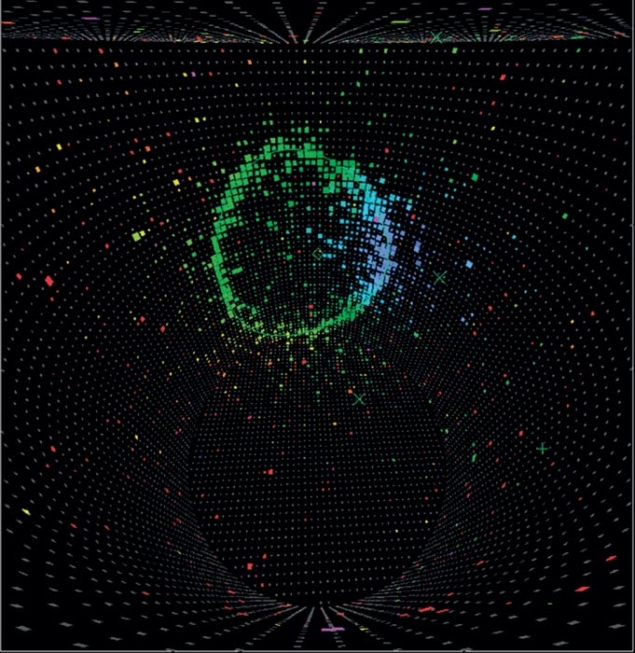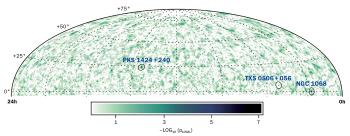
Image credit: T2K collaboration.
The international T2K collaboration chose the EPSHEP2013 meeting in Stockholm as the forum to announce its definitive observation of the transformation of muon-neutrinos to electron-neutrinos, νμ→νe.
In 2011, the collaboration announced the first signs of this process – at the time a new type of neutrino oscillation. Now with 3.5 times more data, T2K has firmly established the transformation at a 7.5σ significance level.
In the T2K experiment, a νμ beam is produced in the Japan Proton Accelerator Research Complex (J-PARC) in Tokai on the east coast of Japan. The beam – monitored by a near detector in Tokai – is aimed at the Super-Kamiokande detector, which lies underground in Kamioka near the west coast, 295 km away. Analysis of the data from Super-Kamiokande reveals that there are more νe (a total of 28 events) than would be expected (4.6 events) without the transformation process.
Observation of this type of neutrino oscillation opens the way to new studies of charge-parity (CP) violation in neutrinos, which may be linked to the domination of matter over antimatter in the present-day universe. The T2K collaboration expects to collect 10 times more data in the near future, including data with an antineutrino beam for studies of CP violation.
In announcing the discovery, the collaboration paid tribute to the unyielding and tireless effort by the J-PARC staff and management to deliver high-quality beam to T2K after the devastating earthquake in eastern Japan in March 2011. The earthquake caused severe damage to the accelerator complex and abruptly halted the data-taking run of the T2K experiment.
• The T2K experiment was constructed and is operated by an international collaboration, which currently consists of more than 400 physicists from 59 institutions in 11 countries: Canada, France, Germany, Italy, Japan, Poland, Russia, Switzerland, Spain, UK and the US.








